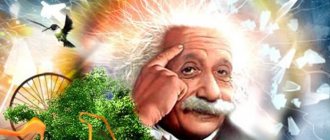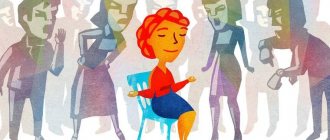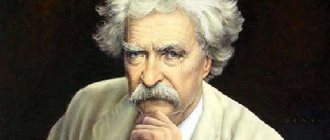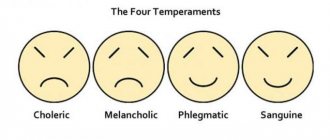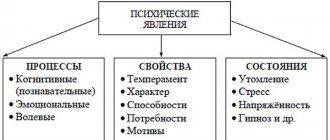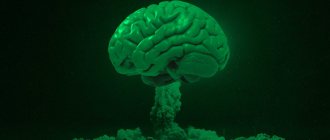Imagination is the ability of the psyche to create images in consciousness. All processes that occur in images are called imagination. Imagination as a mental process constitutes visual-figurative thinking, thanks to which a person can navigate and search for solutions to problems without the direct intervention of practical actions. This process is very important, especially in cases where it is impossible or difficult to carry out the required practical action, or it is simply impractical.
This process reflects the human world around us at higher mental levels. The most popular definition of imagination is a mental process, the essence of which is the creation of new unique images through the processing of the perceived material of ideas that came with previous experience. It is also considered as a phenomenon, as an ability and as a specific activity of the subject. This process has a complex functional structure, so Vygotsky defined it as a psychological system.
The function of imagination is unique to humans and has a certain significance in a person’s specific professional activity. Before embarking on a certain activity, he imagines what the object will look like and mentally creates an algorithm of actions. Thus, a person constructs in advance an image of a future object or the final result of an activity. Developed creative imagination plays a great role in creative professions. Thanks to their developed creative abilities, people earn a lot of money.
There are several types of imagination: active (voluntary), passive (involuntary), recreative, creative.
What is imagination
By definition, imagination in psychology is a process in which images appear in the subconscious that are closely related to life experience, fantasy and way of thinking. It helps to imagine the consequences of certain actions, as well as outline a plan of action in an unclear situation.
According to scientists, imagination is one of the types of brain activity in which new additional neural connections are formed. We can also say that this is a process of transforming reality, creating images associated with it, processing the resulting practical, intellectual and sensory experience. These images are bright, original and at the same time truthful.
Imagination can be called a way of understanding the world around us. It leaves an imprint on our consciousness. Thanks to this, you can not only replay what happened recently, but also imagine what will happen in the future. You have the opportunity to imagine non-existent or absent objects and mentally use them in your consciousness.
It is interesting that even the most pragmatic, skeptical people have imagination. They may live by logic, ironclad principles and rules, but will still dream or think creatively.
Generally accepted concept
Imagination is a cognitive process used in mental functioning and sometimes in combination with psychological imagery. It involves thinking about possibilities in the future.
Imagination helps every person to convey his idea of the world around him. This is a human ability that allows you to transmit information in the form of images
A related term, "mental imagery", can be used in psychology to refer to the process of recalling memory. Memories of objects previously represented in sensory perception.
Because the use of this term conflicts with the use of ordinary language, some psychologists prefer to describe this process as "imagination" or "imaging", or to call it "reproductive" rather than "productive" or "constructive" imagination.
Functions of the imagination
The importance of imagination is difficult to overestimate. Like any other mental process, it has a number of functions:
- Cognitive. This is a function of both thinking and imagination. Helps broaden your horizons, obtain new information and knowledge, and draw up a plan of action in an unfamiliar situation. Teaches a person to be guided by guesses, reasoning and considerations.
- Prediction function. A person can imagine what will follow his actions. This type of imagination is involved in the formation of dreams and daydreams.
- Understanding. It manifests itself in the ability to assume what another person feels and experiences in a given situation, what emotions and sensations he or she has now. This type of imagination is somewhat similar to empathy. It allows you to look into the inner world of your interlocutor and understand what worries him at the moment.
- Protection. When a person plays out a situation in his mind, a possible outcome of events or the consequences of his actions, he can prevent troubles and protect himself from problems.
- Self-development. This function of imagination helps to fantasize, come up with something new, and create.
- Memories. Images from the past emerge in the subconscious.
Not every person has all the functions of the imagination. Their set depends on character, behavior, personal qualities.
Individual characteristics of imagination development
Each person has a different degree of development of imagination, which is reflected in his activities and relationships in society. The individuality of people is that they differ in their own vision of the world.
The brightness of ideas and the novelty of transformed ideas depend on the degree of development of imagination. A strong imagination is an integral feature of artists, writers, sculptors, and directors.
It is difficult for a person with weak imagination to solve problems related to the mental design and representation of specific objects. An insufficiently developed imagination makes life less vibrant and emotional.
People differ significantly in the dominant types of imagination: visual, auditory, kinesthetic. But it happens that a person has highly developed all types, which is reflected in his character and behavior.
In this video you will learn about the psychology of imagination:
Types of imagination
The most basic types of human imagination are passive and active. Each of them is divided into subgroups. Among them are voluntary, involuntary, creative, reproductive imagination, etc. Let's take a closer look.
Passive
Such imagination may have a purpose. It can be regulated and directed using consciousness and willpower. It can also be involuntary, that is, working at the subconscious level.
The importance of imagination in psychology
Considering imagination as a complex phenomenon of the individual’s psyche, psychologists note the following significant parameters:
- The ability to influence nervous processes. With the help of imagination it is possible to relieve stress and reduce nervous tension;
- Help with active mental activity and problem solving;
- Helps you plan and predict your actions;
- Coordination of psychophysiological processes. Helps you concentrate and concentrate on performing any activity.
Creating images
A person creates images in the imagination in several ways:
- Agglutination. The qualities and parts of individual objects are combined into a single whole. Examples: centaur, fairy-tale hut on chicken legs, seaplane, snowmobile.
- Emphasis. Part of the object is divided into separate parts. A good example is caricatures in which the artist highlights a certain feature.
- Hyperbolization. Involves reducing, enlarging, or shifting individual parts of the selected object. Here you can also remember fairy tales, for example, about dragons with several heads.
Another way to create images in the imagination is typification. It is considered the most difficult. Imagine any picture. Contemplating it, you draw in your subconscious the image that the artist conveyed. Or take, for example, a book. The author describes in it the features of the main character. Thanks to this, you can imagine how he looks, thinks, behaves. It is as if you are transported into the world around him.
What does imagination give to a person?
So, we found out what imagination is and what functions it plays. But why do you need it personally? There are several points:
- helps in communicating with other people;
- makes it possible to visualize the goal;
- promotes the development of creative talents;
- participates in decision making and creation of new ideas;
- helps you mentally recreate an image of an object or phenomenon that you have never seen.
Plus, imagination is used in making predictions and action plans for the future. It is needed in all areas of activity, especially in those that cannot be fully automated. We are talking about design, research work.
Does a child need imagination? The answer is clear: yes. Without it, full development is impossible. The first few years of a child's life explore the world around him. And if for some reason his imagination does not work at full strength, the formation of important abilities is inhibited.
The imagination developed in childhood will help an adult to become creative in the future, develop creative skills, and learn to find an unusual way out of a difficult situation. And this will be useful in life.
Why does a person need imaginative thinking?
A person needs imaginative thinking for many reasons. Thanks to him, we can learn to find a way out of difficult life situations and solve difficult problems. Imaginative thinking helps us find calm and provides psychological protection from unnerving situations.
We can mentally transport ourselves to another place and catch our breath for a while. Some scientists believe that thinking about what might happen, especially in vivid colors, also increases the chances of dreams becoming reality.
How to develop your imagination
Psychologists have identified a number of techniques for developing imagination.
In adults
The main thing is to be ready to experiment, not to be shy and not afraid of mistakes. There are many ways:
- Visualization. You need to mentally reproduce the appearance of an object, location or action. Start with simple tasks. For example, look at what lies in front of you. Then close your eyes and imagine this object in detail.
- Reading. This method is related to the previous one. Visualization is also needed here. It's just much more difficult to make it. You will have to remember several characters, images, landscapes at once. And after that, look at their participation in the plot. All this will help you see the full picture. And by the way, reading is much more interesting than watching movies. In the case of reading, no one limits your imagination and imagination.
- Associations. Every adult has associative thinking. Most likely, when you hear the word “green,” you think of grass and trees. And with the word “orange” - about an orange.
- Creation of unusual animals. This is a great way to develop your creative imagination. Let it be, for example, a cat dog. Of course, they don’t talk about it in a biology textbook. But you'll have fun. This exercise is suitable for both adults and children.
- Art. Exhibitions or master classes will make up for the lack of imagination. By observing other people, you yourself can easily create an unusual idea or at least get inspired.
- "Box". Here you will have to take an example from the cartoon character SpongeBob. Remember your favorite activity? He sat in the box and turned on his imagination. No, don't think that you need to do the same. Although children can try. Walk into an empty room and mentally design the interior. Next time, rearrange it, etc. This way you will improve your imagination and perception.
Imagination and the desire to achieve
The first three years of life, a child is under the influence of direct impressions from objects accessible to perception. Then imagination is formed - the ability to mentally see missing objects and situations of manipulating them, transform them, desire or be afraid.
From this point on, two trends emerge. One is to persistently master the objects presented in the imagination - get a coveted toy, a trip to the zoo, a favorite pastime. Another is to give up achievement and make do with imagination. Their balance depends on the family environment and the already established personality traits of the child.
Example from life
I enjoy reading. Imagination helps you immerse yourself in the story. Even seemingly tedious descriptions of the area become much more interesting. I try to see the landscape through the eyes of the author, hear sounds, feel the wind or the scent of flowers.
The same goes for heroes. I try to imagine not only their appearance, but to monitor how their behavior and thinking changes in different situations. Thanks to this, after reading the book, it seems that I have visited this book world.
History of discovery and study
In Russian psychology, interest in the phenomenon arose along with the study of other functions of the psyche. The main contribution to the study process was made by L. Vygotsky. He dedicated a book and dozens of articles to the imagination - a fundamental presentation of findings and theories regarding the development of the ability to imagine in ontogenesis.
Vygotsky paid great attention to the development of cognitive processes in preschool age. The scientist believed that this period was critical. He considered the ability to imagine in preschool age as the ability to create a whole from elements.
Vygotsky noted the complexity of mental activity and gradual development. According to his theory, creative activity depends on acquired experience. The child expresses accumulated knowledge through creativity. The accumulation process is influenced by various factors: interests, needs, desires. The ability to express oneself in childhood and adulthood depends on the speed of their satisfaction. Negative experiences acquired in childhood affect the adult individual.

